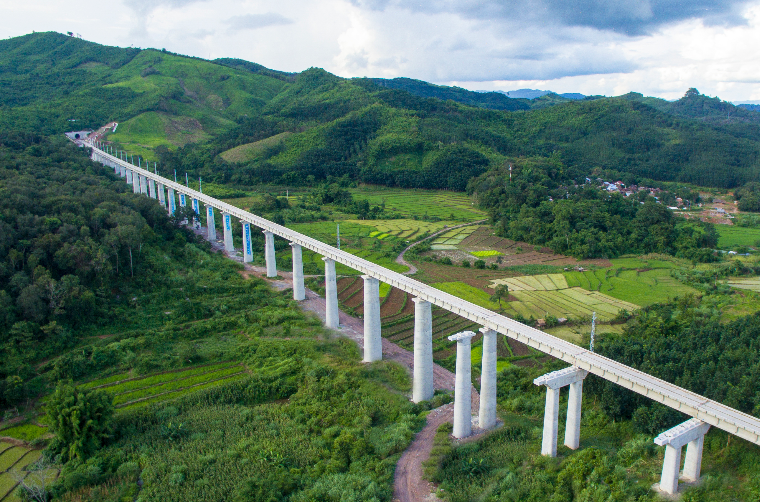by Zhang Jianhua, Lai Mingbo
VIENTIANE, Sept. 14 (Xinhua) -- Chinese engineering companies have laid rail tracks through the Vangvient station, the first major station along the China-Laos railway.
"We have laid 138.5 km rail, passed by the Vangvieng station, and is proceeding to the north to Laos-China border," China Railway No.2 Engineering Group (CREC-2) railing base project manager Hu Bin told Xinhua on Monday.
"The Vangvieng station is among the four major stations of the railway project, with the other three namely Vientiane, Luang Prabang and Boten stations."
To achieve this, PowerChina Sinohydro Bureau 10 Co., LTD (Sinohydro 10) has been working hard for 45 days, one third of the planned construction period, for the offline engineering work at the Vangvieng station to lay the foundation for the railing work.
Thus, when watching the track-laying machine passing by at the end of August as scheduled, the young Chinese engineers had tears in their eyes.
The Vangvieng station, covering about 1.45 million square meters, will become an important passenger hub for the China-Laos railway in the future. The offline construction of the station was originally planned for half a year, but in order to ensure the track laying progress, Sinohydro 10 had to complete the task within two months.
July and August fall in Laos' rainy season, which accumulate over 70,000 cubic meters of silt and soft soil on the construction site, with the deepest part of the silt reaching three meters. Besides excavating the silt, the Chinese engineers also needed to build trenches, cable troughs and escalators on the site.
The huge amount of work in the hot rainy season is due to be a hard fight. The schedule is tight, so 25 Chinese technical and management personnel of the project department, mostly newly graduated from universities, joined the 422 Lao staff in the construction site, working around the clock.
At the beginning of the construction, the station site was covered with mud. The Sinohydro 10 project team decided to replace the filling in a large area, with stones and rocks, to create construction conditions on site. The young Chinese engineers measured and set the line, instructed workers to excavate the mud and erect the model, and directed the slag-carrying trucks in the vast yard.
During the rainy season in Laos, the temperature often reaches more than 40 degrees Celsius when it is not raining, and the sun is burning.
Guo Ge, from the project safety and quality management department, was tanned. "I don't know if my girlfriend will recognize me when I go back?" he said with a smile.
Humidity and high temperature make the construction site like a sauna house. After working, the sweat squeezed from the workers' clothes could wet a patch of ground.
Under the dual pressure of epidemic prevention and construction in the rainy season, Sinohydro 10 completed its task on schedule, making it ready for track laying in Vangvieng station by the end of August.
The China-Laos Railway is a strategic docking project between the China-proposed Belt and Road Initiative and Laos' strategy to convert itself from a landlocked country to a land-linked hub.
The 422-km railway, with 198-km-long 75 tunnels and 62-km bridges, will run from the Boten border gate in northern Laos, bordering China, to Vientiane with an operating speed of 160 km per hour.
The electrified passenger and cargo railway is built with the full application of Chinese management and technical standards.
The project started in December 2016 and is scheduled to be completed and open to traffic in December 2021. Enditem




 A single purchase
A single purchase









